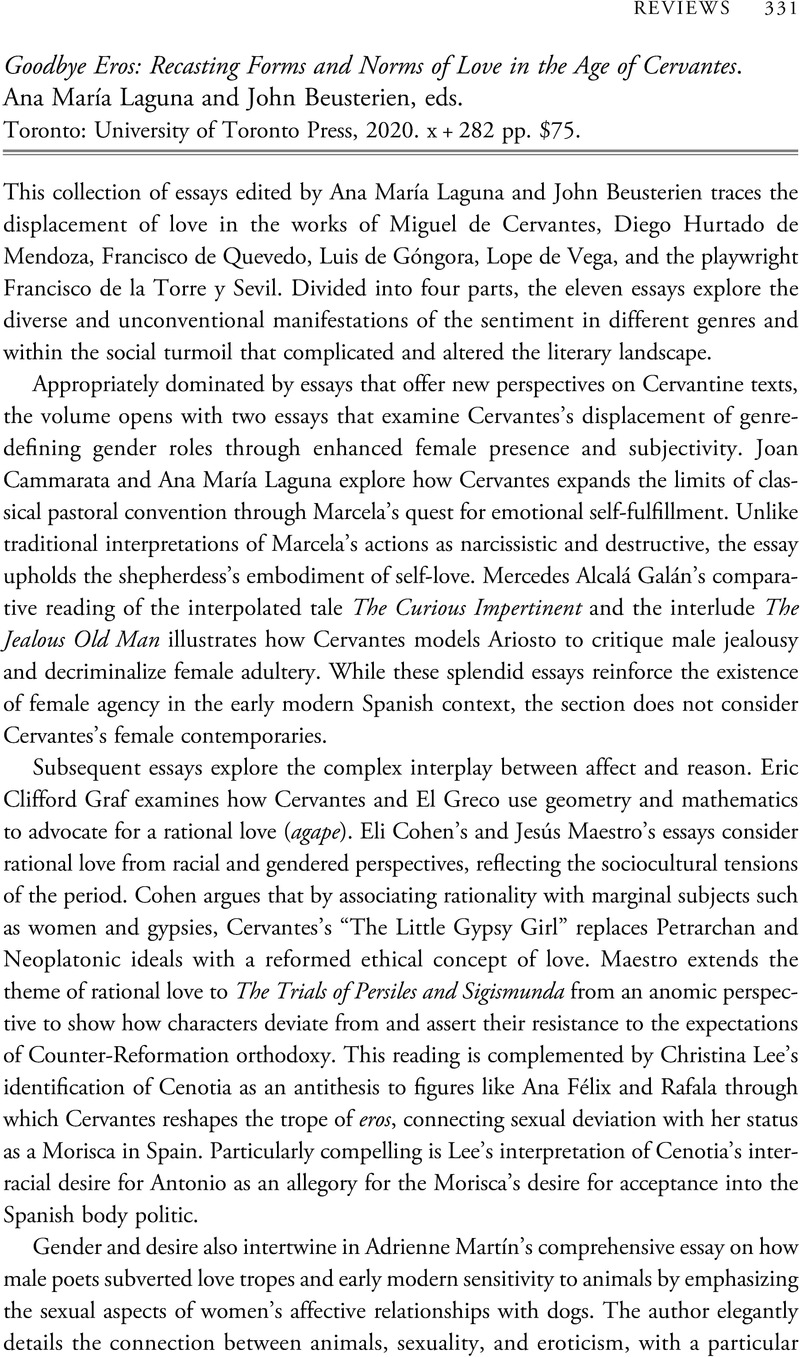No CrossRef data available.
Article contents
Goodbye Eros: Recasting Forms and Norms of Love in the Age of Cervantes. Ana María Laguna and John Beusterien, eds. Toronto: University of Toronto Press, 2020. x + 282 pp. $75.
Review products
Goodbye Eros: Recasting Forms and Norms of Love in the Age of Cervantes. Ana María Laguna and John Beusterien, eds. Toronto: University of Toronto Press, 2020. x + 282 pp. $75.
Published online by Cambridge University Press: 17 April 2023
Abstract
An abstract is not available for this content so a preview has been provided. Please use the Get access link above for information on how to access this content.

- Type
- Review
- Information
- Copyright
- Copyright © The Author(s), 2023. Published by the Renaissance Society of America



